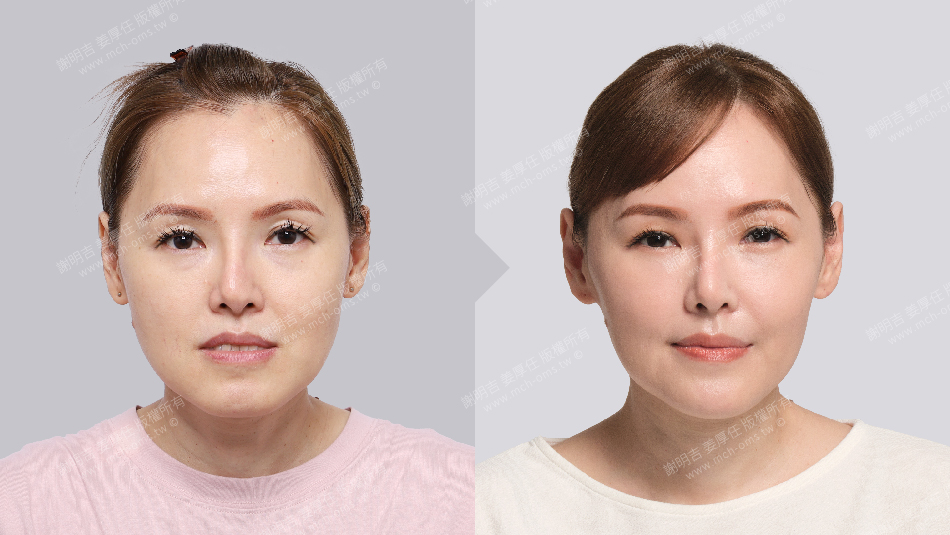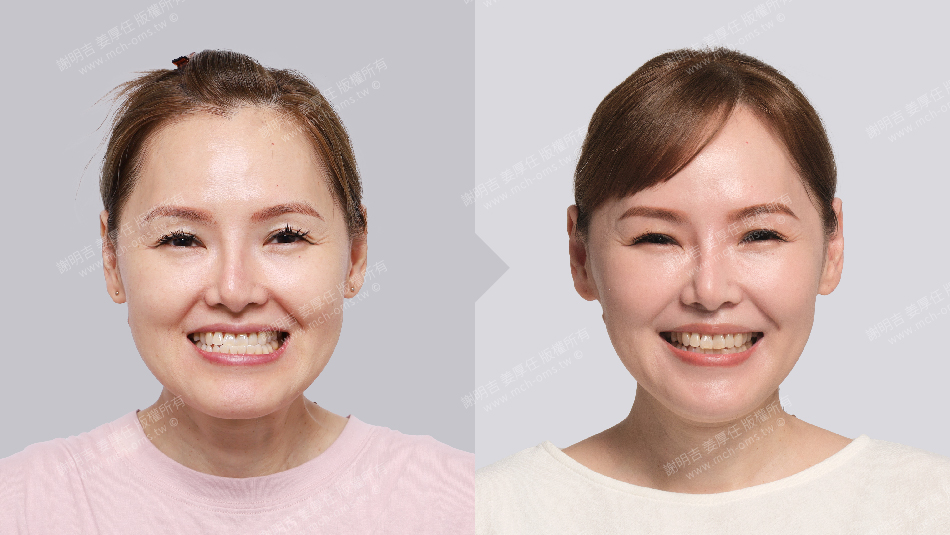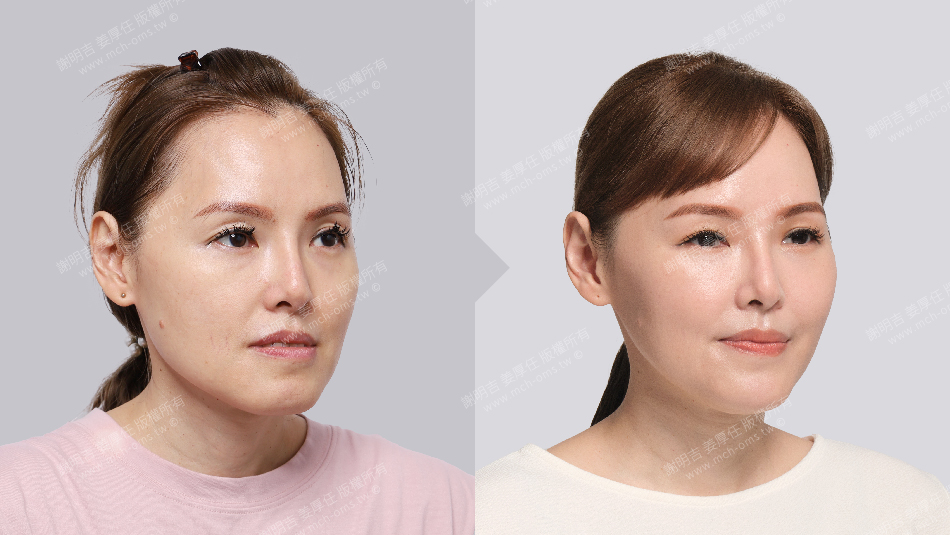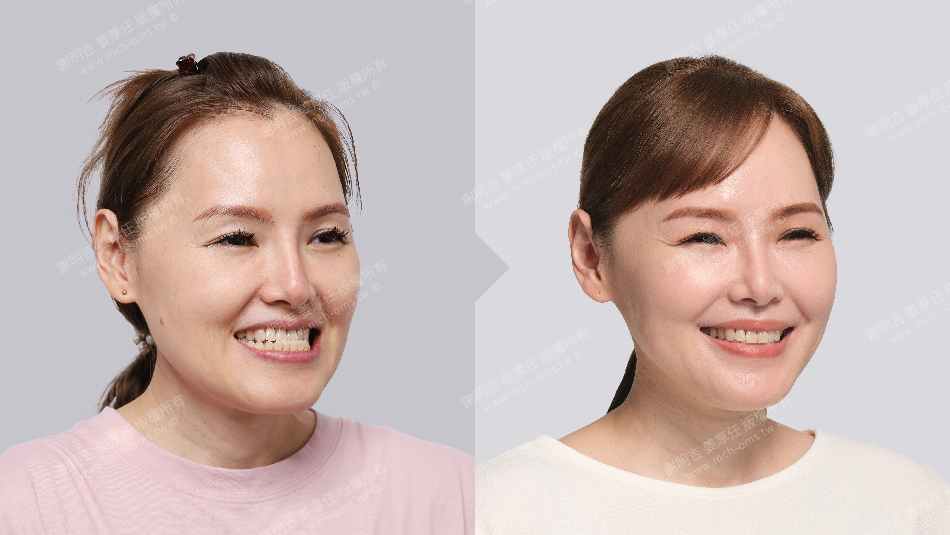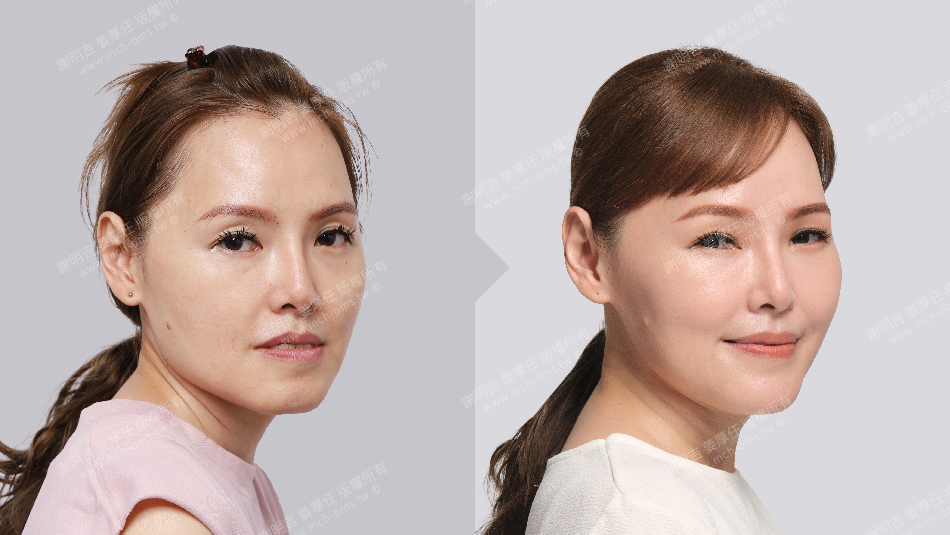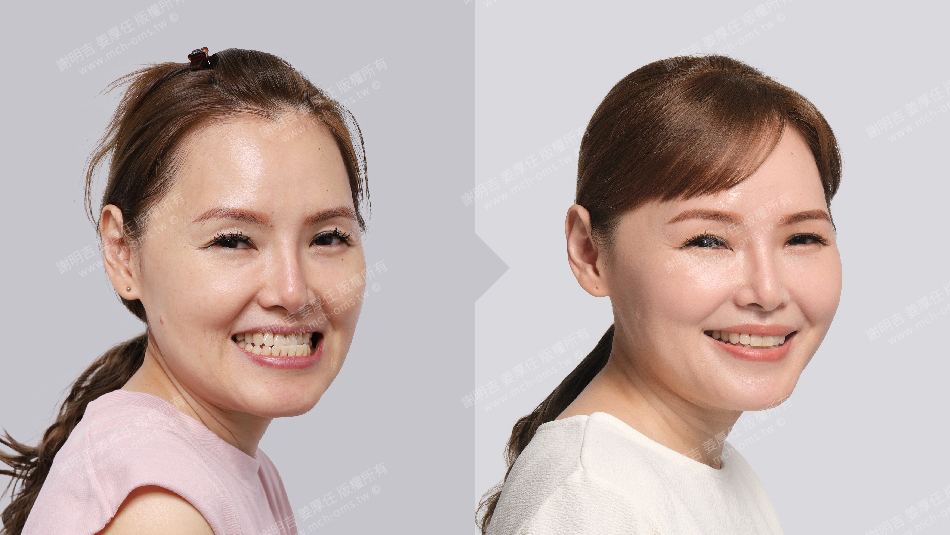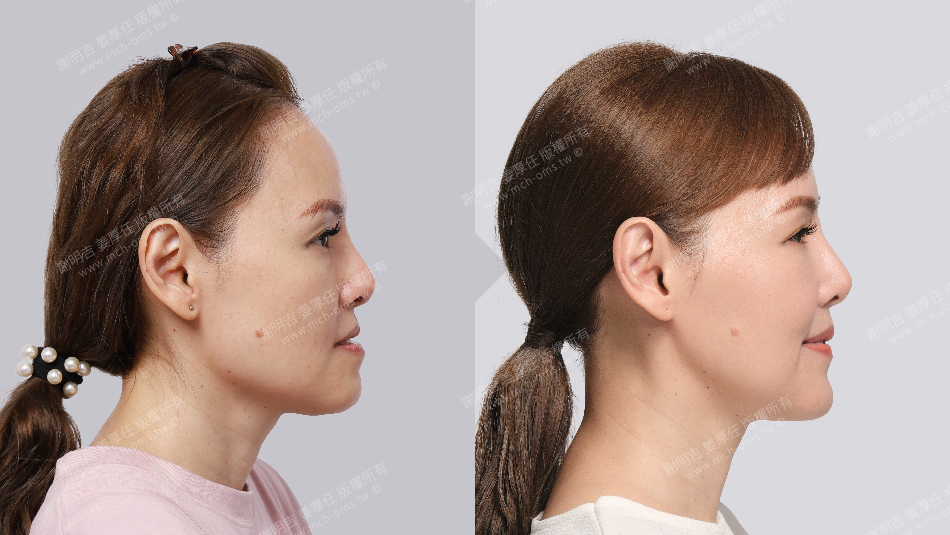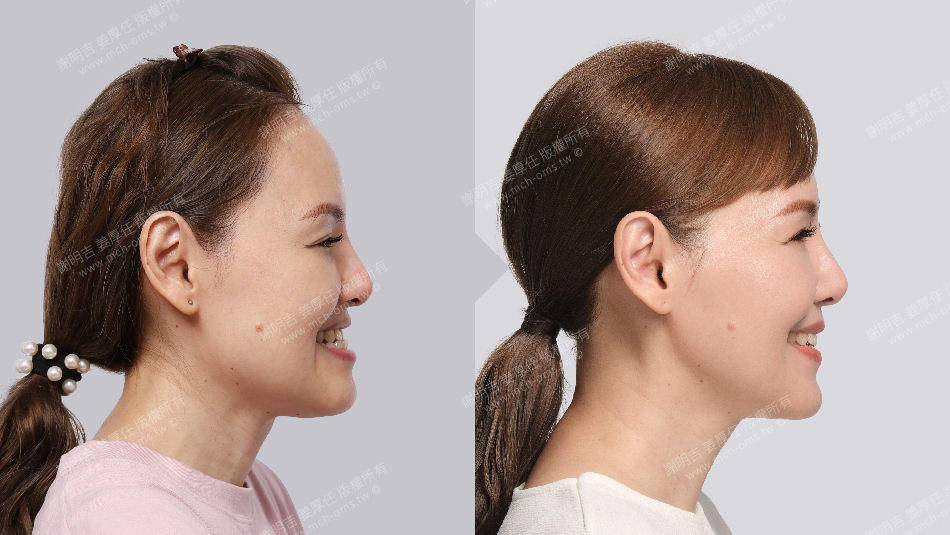| Preoperative symptoms | surgical plan |
| Retrusion of the palate compresses the airway causing sleep apnea | Airway Lift Surgery 3D Customized Orthognathic Surgery |
I always wake up in the middle of my sleep...
Diagnosis and treatment plan and postoperative changes
There is a common myth about orthognathic surgery to treat sleep apnea, which is that only people with retrognathic jaws have sleep apnea.
The case shared today is a patient with a long jaw (too long chin) and sleep apnea. Most patients with retrognathic mandibles - small chins - tend to collapse the base of their tongue during sleep and compress the airway, causing sleep apnea.
However, we found that the obstruction point of this patient's airway was different from other patients with retrusion. It was located in the retropalatal space and nasal cavity. Computed tomography confirmed that the cause was caused by the retraction and stenosis of the maxillary bone. We also found that her lower jaw was Excessive turbinate hypertrophy can also aggravate the symptoms of sleep apnea.
Through clockwise rotation of the two-jaw orthognathic surgery, we move the maxilla forward, clear the obstruction near the suspensory-oropharynx, and allow the midface depression to be properly supported. And because of the rotation, the originally protruding mandible can return to its proper position.
At the same time as the orthognathic surgery, we also reduced the thick and obstructed inferior turbinate to increase the patency of the nasal cavity. Although the patient did not have braces after surgery, he still had a good bite.
Appearance changes
